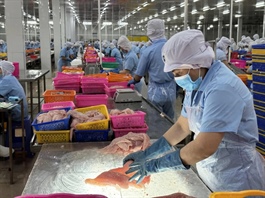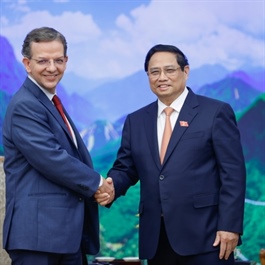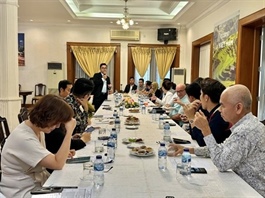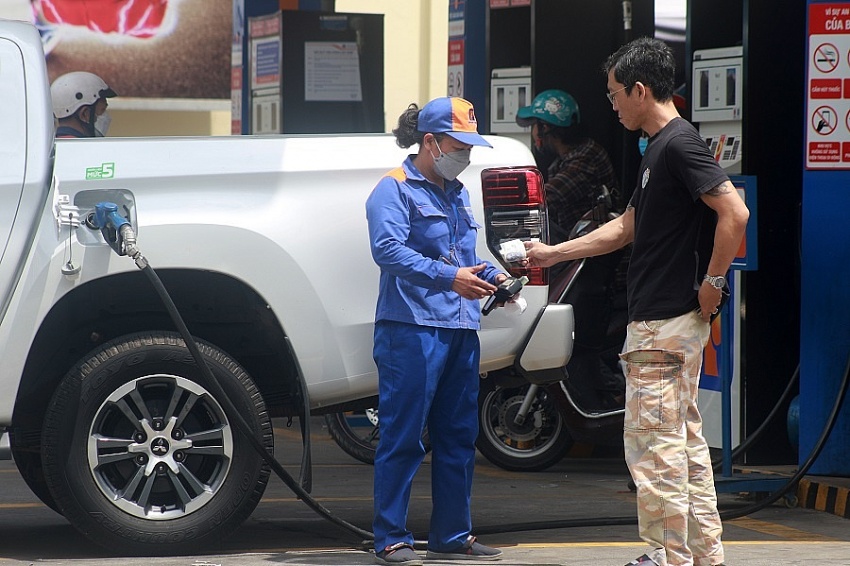Việt Nam sees robust growth and abundant opportunities await: Insiders
Việt Nam sees robust growth and abundant opportunities await: Insiders
Việt Nam is expected to see robust growth in the next 5 -10 years, opening more investment opportunities for foreign investors, including ones from Singapore, in all sectors, said insiders.
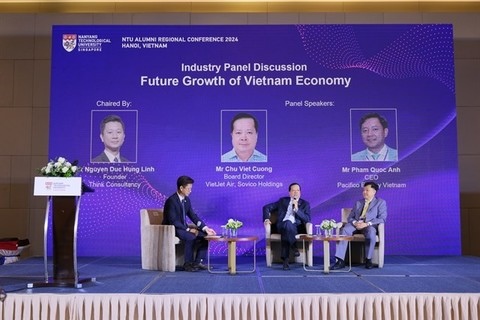
Speakers at a panel discussion at the event on Saturday morning. — Photo courtesy of the organiser |
On Saturday, NTU Alumni Regional Conference 2024, an annual event organised by Singapore-based Nanyang Technological University, was held in Hà Nội.
The event brought together distinguished speakers who are renowned leaders in business, public service and academia from Việt Nam, Singapore and other ASEAN countries. This year’s conference centered around the theme "Economic Growth, AI and Innovation.”
Attending the event, Singapore Ambassador to Việt Nam Jaya Ratman highlighted the strong collaboration between the two countries across all sectors.
“We cooperate across almost every area, including trade, defence, security, culture, food and politics and of course have strong people-to-people relationships, so we are well represented here,” he said.
“There is so much more we can do together. As both countries have progressed over the past few decades, our needs and aspirations have evolved. Hence, our preoccupation in recent years with deepening and widening the scope of cooperation in the digital and green arenas.”
At the conference, speakers were all positive about the growth potential of Việt Nam.
Nguyễn Đức Hùng Linh, co-founder and chief advisor of Think Future Consultancy, said that Việt Nam is going to experience strong development over the next 5 - 10 years as it has established itself as a major manufacturing hub, particularly for electronics.
“Samsung, which accounts for nearly 25 per cent of Việt Nam’s exports, continues to expand its operations, while the shift of manufacturing bases from China to Việt Nam due to trade tensions further bolsters this sector,” Linh said.
The participation of Việt Nam in multiple free trade agreements (FTAs) is also a significant growth driver, as these agreements reduce tariffs and open new markets for Vietnamese goods, he added.
“The Comprehensive and Progressive Agreement for Trans-Pacific Partnership (CPTPP) and Regional Comprehensive Economic Partnership (RCEP) are expected to boost Việt Nam’s GDP by 1.32 per cent and 4.9 per cent by 2030, respectively. The European Union-Vietnam Free Trade Agreement (EVFTA) is projected to increase the country’s exports to the world’s largest trading bloc by 42.7 per cent by 2025.”
Sharing the same thought, Phạm Quốc Anh, CEO of Pacifico Energy Vietnam, said that Việt Nam has a good foundation for growing businesses, such as a young population, the willingness to accept new ideas and a wide spread of the Internet.
Việt Nam’s young population is a significant asset, with a median age of around 32 years and a labour force participation rate of 77 per cent. A World Bank study suggests that Việt Nam’s demographic transition could add 1.5 per cent to annual GDP growth over the next decade.
These are also advantages for luring foreign investors into Việt Nam in the future, Quốc Anh said, adding that green energy, manufacturing and logistics are industries attracting more interest as Việt Nam is targeting the green growth.
Speaking to Việt Nam News, Hùng Linh of Think Future Consultancy said that huge opportunities are also seen in the tourism industry.
"The Government’s tourism strategy aims to make tourism a spearhead economic sector by 2030, contributing 12-14 per cent of GDP. Efforts to develop sustainable tourism and diversify offerings will likely boost this sector."
Meanwhile, Chu Việt Cường, Board Director of Vietjet Air, believed that the room in Việt Nam’s aviation industry is still very large and investors can find opportunities through joint ventures.
However, he also pointed out some weaknesses that the country needs to improve on quickly.
“We are no longer in the era of cheap labour costs and large land funds. Now we need more skilled workers for the new industries. On the other hand, we also need to create a clear and transparent environment for enterprises,” he said.






